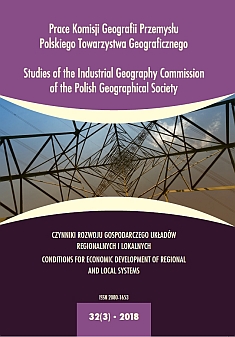Zagospodarowanie terenów poprzemysłowych na przykładzie Zakładów Radiowych „Diora” w Dzierżoniowie
Re-Use of Post-Industrial Sites Based on the Example of ‘Diora’ in Dzierżoniów
Author(s): Wojciech JurkowskiSubject(s): Business Economy / Management, Financial Markets
Published by: Wydawnictwo Uniwersytetu Komisji Edukacji Narodowej w Krakowie
Keywords: monofunctional city; post-industrial area; revitalisation; service zone;
Summary/Abstract: Diora Factory was the largest company in the history of Dzierżoniów and its brand was well-known throughout Poland. Therefore Diora was a determinant of development, as well as the symbol of the town. After the liquidation of Diora, there appeared a problem of revitalisation of postindustrial sites occupying significant area in the centre of the town. Finally, local authorities decided to demolish the bulk of Diora’s buildings and change the function and nature of the area. On the site of the main building of Diora was formed a large hypermarket ‘Kaufland’ with many additional services. Other buildings next to the hypermarket were transformed to service zone, where many economic operators located their companies. The aim of this study was to show the process of change aimed at the revitalisation of this place. This article contains: analysis of local authorities’ actions aimed at the revitalisation of this place, principles of creating a new service zone and identification of economic operators in this zone. These changes have resulted in converting useless post-industrial areas in the rapidly developing service zone. Revitalisation of Diora Factory can be used as an example of good practice for other monofunctional cities, which have the same problems.
Journal: Prace Komisji Geografii Przemysłu Polskiego Towarzystwa Geograficznego
- Issue Year: 32/2018
- Issue No: 3
- Page Range: 174-185
- Page Count: 12
- Language: Polish

